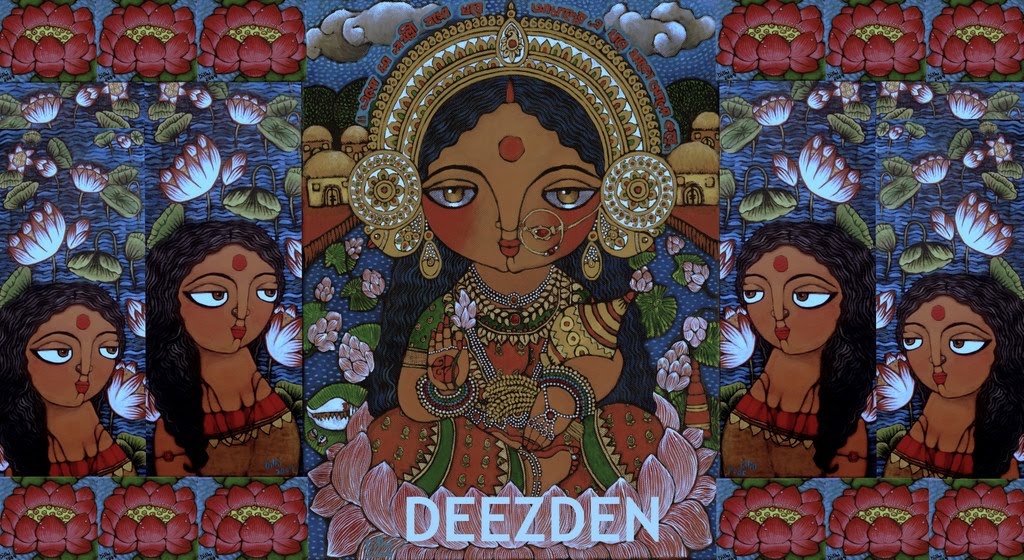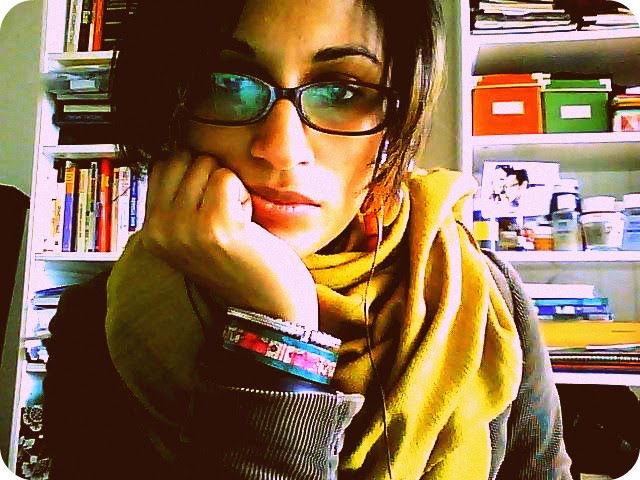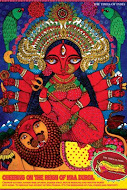All of Kolkata wakes up to this radio broadcast and, henceforth,
begins the traditional six day countdown to the puja celebrations!
''On the dawn of Mahalaya, homes in Bengal resonate with
the immortal verses of the Chandipath (chanting from "Chandi").
Chanting of the hymns from the holy book of "Chandi" in the recorded voice
of late Birendra Krishna Bhadra over radio
has become synonymous to the real Chandipath.
The Chandipath is aired by All India Radio in the programme
''Mahisasura Mardini'' (the annihilator of the demon Mahishasura),
narrating the incarnation of Goddess Durga and her fight with Mahishasura.
Since the early 1930s, Mahalaya has come to associate itself with this early morning radio program, a beautiful audio montage of recitation from
the scriptural verses of "Chandi", Bengali devotional songs, classical music
and a dash of acoustic melodrama.
For nearly six decades now, the whole of Bengal rises up in the chilly pre dawn hours, 4 am to be precise, of the Mahalaya day to tune in to the broadcast.''
You can listen to recorded Mahalaya here. Tarpan: Within the first minute of the video itself, we move to images from 'Tarpan' being performed at the Ganges, the act of people praying for their deceased relatives and taking the holy dip in the river Ganga. During these rituals, the family prepares the food items as an offering and pray that the departed souls of the ancestors rest in peace.
Kumortuli : Almost half-way into the video, the cameras take us into the heart of ''Kumortuli'', the place most famous for sculpting Goddess idols for the pujas. A day before the puja, the video wonderfully captures all the hustle and bustle in the shops, puja preparations in full swing and all the decorators working around the clock to finish their work. You can see many more images captured by various photographers in Kumortuli on FlickR.
The video is titled 'Bodhon', a name derived from the word 'Akalbodhon' or the 'Untimely invocation' as Durga puja is often referred to. 'Ashwin' (english:Sept to Oct) an uncustomary time for commencement of the worship. Traditionally durga puja is performed during Spring (Basanta). However, Lord Rama did "Chandi Puja" and invoked the blessings of Maa Durga to kill Ravana despite the time of year not being right and from this came the name.
In this video you will see glimpses of several puja ''Pandals'' or the temporary structures that are meticulously crafted and designed specially for the puja to house the idols of Maa Durga in every neighbourhood. As you can see, there is an extensive display of craftsmanship and many of the pandals have used Bengali folk forms of art and craft this year.
The video has the ''Dhaak'' or the drums played throughout the festival at the pandals in front of the Goddess as part of the festival in the background.
Since we spoke of Shobhabajar Rajbari, it is important for me to add this:
''Traditional Durga pujas in Bengali households are an interesting feature of Calcutta's heritage. There are some pujas which dates back nearly 200-250 yrs,
are still performed with great dedication and devotion.
These pujas continue to uphold the traditional values but at the same time are no less
compared to the highly embellished community pujas organized in the city today.''
I want to share with some images beautifully captured by my cousin brother Rajarshi Halder
from some of these very first and most famous pujas in Kolkata.
Shobhabajar Rajbadi - 2nd house
 Shobhabajar Rajbadi - 1st house
Shobhabajar Rajbadi - 1st house


These traditional idols, to my mind, are unmatched in their beauty and appeal.
This video captures the city on the seventh day of the puja or ''Maha-Shaptami''.
The rains could not dampen the spirit of the devotees and they were out
visiting pandals and praying to the Goddess in full force. My favourite part of the video is when they show a ''Purohit'' or the priest worshiping the Goddess by waving a huge ''Haath-pakha' or the traditional Bengali hand-crafted hand-fan (haath:hand, pakha: fan) at 2:18 into the movie.
Sights and sounds typical of this time in Kolkata, quite nicely captured.
The eighth day of the puja or ''Maha-ashtami''. The city is flooded with colourful lights and the people swarm the streets to see more pujas and walk all the night through from one to another pandal. The video starts with a festive dance and music and then a beautiful moment of ''Pushpanjali'' (or offering flowers to Maa, pushpa: flower, anjali: offering) where the priest chants couplets in Sanskrit, fresh flowers are handed over to all attending devotees, we repeat the chants after the priest and we offer them to Maa. This is an integral part of Durga puja, done several times every morning in batches (so that all the visiting devotees can offer) within a fixed time-period and the tradition is to fast before the ''Anjali''. We then see a visual of the
''Kumari puja'', a rather interesting ritual that, to my mind, is empowering for the girl child in our society.
Evening in Kolkata on the ninth day of the puja, on ''Maha-Navami''.
Awards have been handed out, some pandals have won and some have not. The last day of the puja, last day of ''adda'', aimless chit-chat and ladies competing to look the best,
yound lovers and heart-breaks, music and mouth-watering food,
nostalgia and being home-sick for all of us away from home, an evening of mixed-feelings.
The tenth and final day of the puja, time to bid farewell to Maa only to welcome her back next year. Married ladies play with ''Sindur'' or vermilion, dance and celebrate.
Everybody then gets ready for the immersions and the river banks reverberate with chants, hearts are heavy but we let go of Maa knowing that she will answer our prayers
and visit us again at this time next year.
I leave you with some photos of ''Sindur-khela'' from our Puja album of 2005,
we were in Mumbai at that time.




Hope you enjoyed this post.
Would love to know your thoughts on what you see!
Thank you Anandautsav for the videos and helping us all
visit pandals this year from wherever we are.




































































 The
The 
















